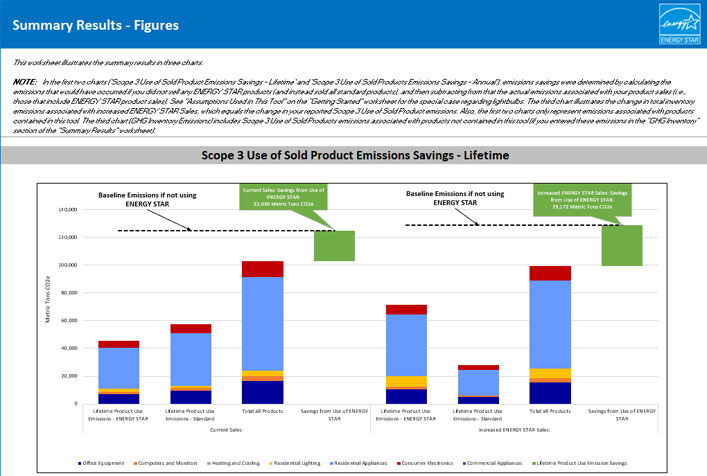Development of the ENERGY STAR Scope 3 Use of Sold Products Analysis Tool

Project Brief
The Challenge
Scope 3 emissions are the result of activities from assets not owned or controlled by the reporting organization, but that the organization indirectly affects in its value chain. For many organizations, Scope 3 emissions account for the majority of emissions in their emissions inventories. Category 11 within Scope 3 (use of sold products) includes emissions from the use of goods and services sold by the organization, and for retailers, often represents the largest category of emissions. Retailers working with the ENERGY STAR program requested a tool that they could use to benchmark and project their Scope 3 emissions associated with the use of sold products.
ERG's Solution
Working with ENERGY STAR and the U.S. Environmental Protection Agency, ERG developed the ENERGY STAR Scope 3 Use of Sold Products Analysis Tool. This Microsoft Excel-based tool quantifies emissions associated with a retailer’s current sales of ENERGY STAR products and forecasts reductions in emissions based on increases in sales of ENERGY STAR products. With over 70 categories, it can help retailers of any size pinpoint the types and quantities of ENERGY STAR products that will bring them closer to meeting or beating their corporate emission goals.
Client
U.S. Environmental Protection Agency